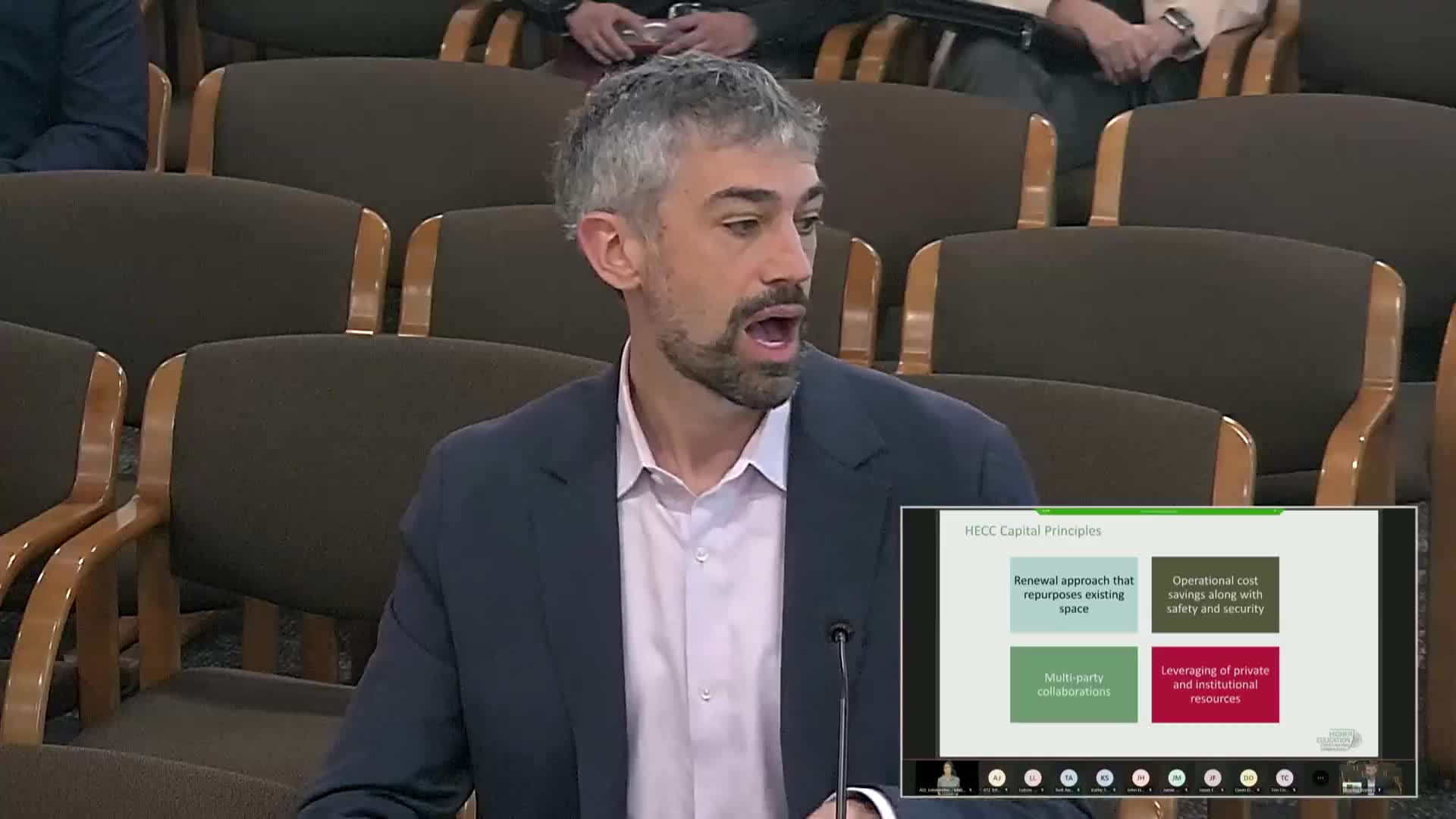Governor's budget proposes $20M for three community college projects
May 02, 2025 | Capital Construction, Ways and Means, Joint, Committees, Legislative, Oregon
This article was created by AI summarizing key points discussed. AI makes mistakes, so for full details and context, please refer to the video of the full meeting. Please report any errors so we can fix them. Report an error »

The Oregon Legislature's Joint Committee on Ways and Means Subcommittee on Capital Construction convened on May 2, 2025, to discuss critical funding priorities for community colleges and public universities. A key focus of the meeting was the prioritization process for capital projects, emphasizing a renewal approach that repurposes existing spaces to enhance operational efficiency and safety.
The Higher Education Coordinating Commission (HEC) outlined its principles for project selection, which include collaboration with private and institutional resources and adherence to statutory limitations. Notably, community colleges are restricted to one project approval at a maximum of $8 million, a cap that has not adjusted for inflation since its establishment, raising concerns among committee members about its relevance in today’s economic climate.
Senator Wagner questioned the longevity of the $8 million cap, highlighting its failure to keep pace with inflation since its inception, potentially hindering community colleges' ability to address modern needs effectively.
The committee reviewed a list of proposed projects, with the governor's recommended budget including three new initiatives totaling $20 million in state funding, matched by over $60 million in local funds. These projects are set for Clackamas, Mt. Hood, and Klamath Community Colleges. Additionally, the budget reauthorizes two previously approved projects at Clatsop and Southwestern Community Colleges.
The meeting underscored the importance of strategic planning in higher education funding, with the HEC committed to ensuring that state-backed debt supports educational investments rather than auxiliary facilities. As the committee moves forward, the implications of these funding decisions will be closely monitored, particularly in light of the ongoing discussions about the adequacy of financial caps and the prioritization of educational infrastructure.
The Higher Education Coordinating Commission (HEC) outlined its principles for project selection, which include collaboration with private and institutional resources and adherence to statutory limitations. Notably, community colleges are restricted to one project approval at a maximum of $8 million, a cap that has not adjusted for inflation since its establishment, raising concerns among committee members about its relevance in today’s economic climate.
Senator Wagner questioned the longevity of the $8 million cap, highlighting its failure to keep pace with inflation since its inception, potentially hindering community colleges' ability to address modern needs effectively.
The committee reviewed a list of proposed projects, with the governor's recommended budget including three new initiatives totaling $20 million in state funding, matched by over $60 million in local funds. These projects are set for Clackamas, Mt. Hood, and Klamath Community Colleges. Additionally, the budget reauthorizes two previously approved projects at Clatsop and Southwestern Community Colleges.
The meeting underscored the importance of strategic planning in higher education funding, with the HEC committed to ensuring that state-backed debt supports educational investments rather than auxiliary facilities. As the committee moves forward, the implications of these funding decisions will be closely monitored, particularly in light of the ongoing discussions about the adequacy of financial caps and the prioritization of educational infrastructure.
View full meeting
This article is based on a recent meeting—watch the full video and explore the complete transcript for deeper insights into the discussion.
View full meeting
